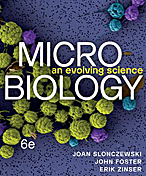Mycena chlorophos: Difference between revisions
No edit summary |
|||
| Line 4: | Line 4: | ||
Domain: Eukaryote; Phylum: Basidiomycota; Class: Agaricomycetes; Order: Agaricales; Family: Mycenaceae; Genus: Mycena (Taxonomy). | Domain: Eukaryote; Phylum: Basidiomycota; Class: Agaricomycetes; Order: Agaricales; Family: Mycenaceae; Genus: Mycena (Taxonomy). | ||
==b. Species== | ==b. Species== | ||
Mycena chlorophos | |||
=2. Introduction= | =2. Introduction= | ||
Revision as of 14:31, 6 December 2021
1. Classification
a. Higher order taxa
Domain: Eukaryote; Phylum: Basidiomycota; Class: Agaricomycetes; Order: Agaricales; Family: Mycenaceae; Genus: Mycena (Taxonomy).
b. Species
Mycena chlorophos
2. Introduction
Figure 1. A photograph of Mycena chlorophos glowing in the dark. This image was created by Steve Axford from Mushroom Observer on February 6, 2010 in Tara Ridge, Booyong, New South Wales, Australia. Image licensed under CC BY-SA 3.0.
Mycena chlorophos is a bioluminescent fungus primarily found in subtropical Asia (1). It is an aerobe that emits a pale green light from its pileus and gills (Figure 1) and one of sixteen Mycena fungi that emit light (2). Mycena species are characterized by their bell-shaped caps and thin stems (1). Current research on M. chlorophos investigates the mechanism that generates bioluminescence (4). Research on this fungus has potential importance in the medical field, as the bioluminescent feature of M. chlorophos may be used to further develop noninvasive bioimaging techniques (5).
3. Genome structure
Describe the size and content of the genome. How many chromosomes? Circular or linear? Other interesting features? What is known about its sequence?
4. Cell structure
Interesting features of cell structure. Can be combined with “metabolic processes”
5. Metabolic processes
Describe important sources of energy, electrons, and carbon (i.e. trophy) for the organism/organisms you are focusing on, as well as important molecules it/they synthesize(s).
6. Ecology
Habitat; symbiosis; contributions to the environment.
7. Pathology
How does this organism cause disease? Human, animal, plant hosts? Virulence factors, as well as patient symptoms.
8. Current Research
Include information about how this microbe (or related microbes) are currently being studied and for what purpose
9. References
It is required that you add at least five primary research articles (in same format as the sample reference below) that corresponds to the info that you added to this page. [Sample reference] Faller, A., and Schleifer, K. "Modified Oxidase and Benzidine Tests for Separation of Staphylococci from Micrococci". Journal of Clinical Microbiology. 1981. Volume 13. p. 1031-1035.
